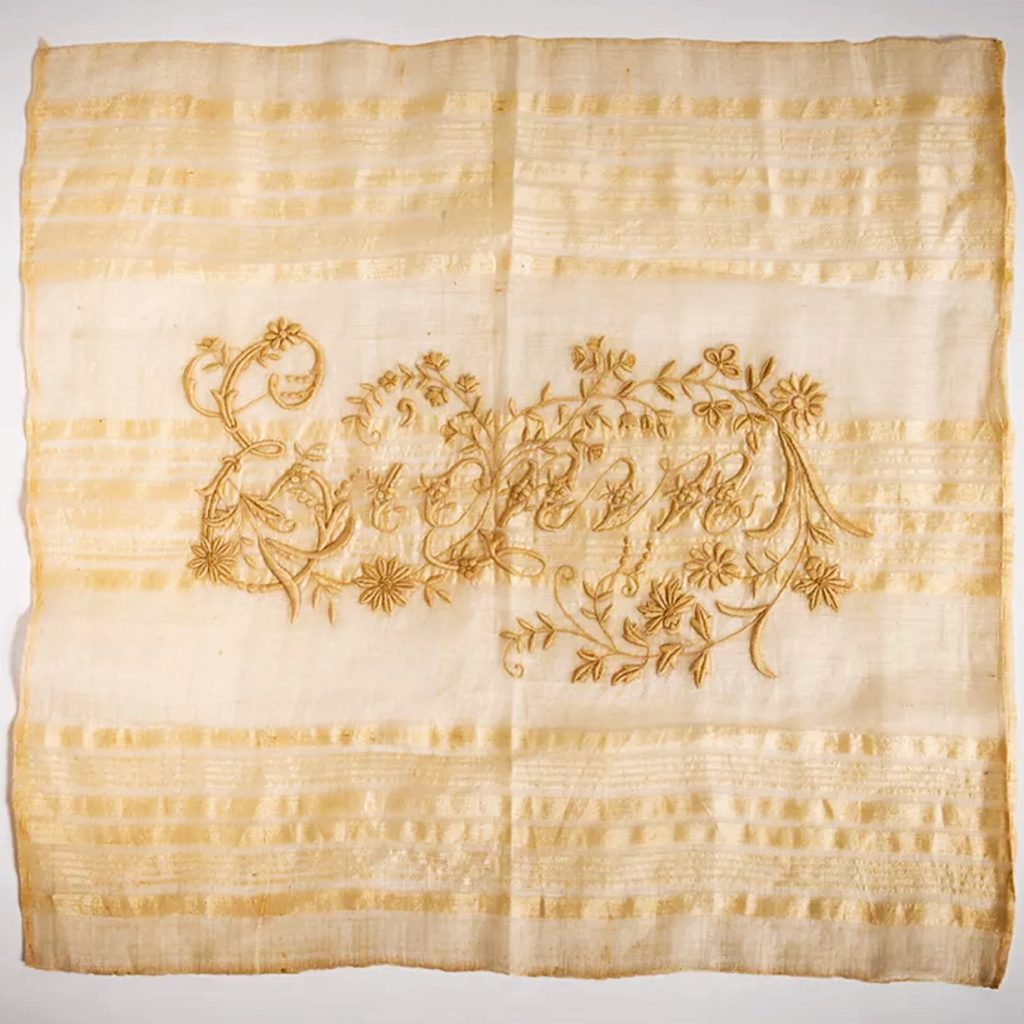Founded in 1904 in Trebizond to support girls through work and education, the Pontic Women’s Welfare Association was re-established in Thessaloniki following the Exchange of Populations in 1923. Initially the organisation provided training for girls and women in the arts of embroidery and tailoring to enable them to secure work. However, in response to changing social needs, the role of the organisation changed to provide social care services for children and the elderly.

“A testament to the hands that created…”
The exhibition of embroidery and handicrafts was initially conceived as a way of bringing the heirlooms of the association’s members together and publishing a catalogue commemorating 100 years since the founding in Trebizond. As the project developed, objects were donated with their stories of refugee memory. This sparked the idea for “a museum of the world of women’s work”, covering handicrafts like needlework and embroidery, that would continue to tell the history of refugees from Pontus in Thessaloniki.
“We brought things, but most were lost along the way…”
Among the objects donated to the museum are items that have travelled through time and space: a Singer sewing machine from Trebizond used in 1911 and again in Thessaloniki after the Exchange of Populations, an iconostasis curtain, an icon of St George, an embroidered brush case and other fabrics and needlework. These are items that were once part of every day life. As the distance of time and place has widened, they have become objects of memory that hold a tangible connection to a collective past.

Images from the inaugural 2005 exhibition of the Museum of the Pontic Women’s Welfare Association (Μουσείο Σωματείου Μέριμνας Ποντίων Κυριών) in Thessaloniki titled “Embroidering the Memory” «Κεντώντας την Μνήμη», the online exhibition “100 Objects 1922-2002”, and the commemorative book “Embroidering the memory from Trebizond to Thessaloniki” (2011) by Eleonora Skouteri-Didaskalou.

The silk embroidery of Eirini Hantzara
Born in Adramiti in 1890 (present day Edremit, Balikesir), Eirini later moved to Constantinople with her family where she lived until 1924. When her family left the city to resettle in Mytilene during the period of exchange, she could only take only a few possessions with her. Travelling by boat with her mother and young daughter, she carried a small suitcase with some children’s clothes and household items. Among these items she had this hand embroidered fabric bearing her name that she had crafted herself.
The silk embroidery was passed on to her daughter, and then to her granddaughter who donated it to the Folklore and Ethnological Museum of Macedonia Thrace.

Eirini’s embroidery and her personal narrative are featured in the online exhibition “100 Objects: 1922-2022” as part of the project Αντικείμενα σε Κίνηση (Objects in Motion) organised by Institute of Historical Research of the National Research Foundation. The exhibition examines some of the objects that Asia Minor refugees brought with them to Greece and tells the personal narrative of each family through these items.
Photo: Nikos Tsiokas